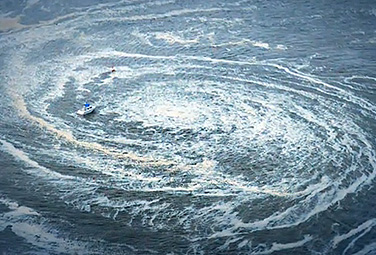News
Earthquake, tsunami demonstrate
need for multi-hazard approach

“Cascading events” like the Japanese earthquake and resulting tsunami point to the need for an integrated approach to preparing for, mitigating and responding to extreme events, UB researchers say.
-
 Print
Print -
 Comments
Comments
-
Multimedia

UB faculty experts talk about the earthquake and tsunami. Watch a media briefing.
The magnitude 8.9 earthquake off the coast of northern Japan and the tsunami it triggered demonstrate the need for an integrated approach to preparing for, mitigating and responding to extreme events, say researchers at UB, MCEER and the UB Center for GeoHazards Studies, who spoke to media in a briefing Friday on the North Campus.
“It’s striking just how complicated these disasters can be,” says Gregory Valentine, geology professor and director of the Center for GeoHazards. Coincidentally, Valentine had planned to fly to Japan on Friday to attend “The First Workshop of Asia-Pacific Region Global Earthquake and Volcanic Eruption Risk Management.”
“We tend to view the disasters from within our own research disciplines, but in fact, numerous disciplines are needed to better prepare for, mitigate and respond to such extreme events,” says Valentine. “You can’t study individual hazards in isolation.”
Gilberto Mosqueda, associate professor of civil, structural and environmental engineering and a researcher at MCEER, the Multidisciplinary Center for Earthquake Engineering Research headquartered at UB, agreed, noting that numerous fires were triggered as the result of the earthquake. Such fires can be caused by the rupturing of utility lines underground and in buildings. He said that while structures have been designed to resist earthquake forces and to resist fires, once shaking occurs—even if the building remains standing—their ability to resist fires may be reduced.
“This is a cascading event,” Mosqueda said. “This earthquake will push us to pay more attention to what happens during these cascading events. We are focusing on this at UB, to study how systems behave under multiple hazards, so that we can minimize loss of life and property damage in these extreme events.”
Such events also have severe environmental repercussions beyond the way they affect the built environment, according to Chris Renschler, associate professor of geography and director of the Landscape-based Environmental System Analysis and Modeling Laboratory.
“This cascading event has caused dramatic changes inland and especially in the coastal landscape and its ecosystems, in addition to its impact on infrastructure,” he said, noting that landslides and various sources of pollution potentially could be severe short-and long-term hazards for humans and wildlife.
UB faculty often travel to countries and regions devastated by earthquakes as part of international efforts to improve seismic design of buildings and infrastructure. Disaster mitigation, response to extreme events and multi-hazard engineering are research strengths of the university identified in the UB 2020 strategic plan.

Reader Comments